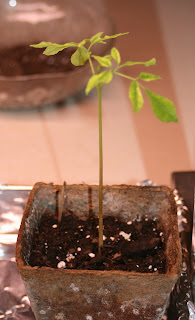Like a bad remake of the movie ‘Invasion of the Body Snatchers’, a little known plant is showing up in homes all over southwest Missouri!
Why, I myself have two plants growing even as I write this tome. Looking back, everything is a blur. I’m not sure where the seeds came from. Possibly from the depths of space! Arriving from the dark void these seeds have now discovered the earth! Today, I just heard of another residence a couple of towns over with the SAME EXACT TREE growing there! Those poor fools! You see,I could have tried to warn them, but I’ve lost the will. I should have stopped the critters early on when they were tiny, weak and frail. Now, they are so very large and imposing. Did I mention they talk to me inside my head? More and more it’s their thoughts I hear. Not mine. It’s their bidding I do now. One plant has even begun to look familiar…a mini-me with leaves. Just yesterday, I caught myself watering my feet! (Actually, it felt refreshing...).
Now, these insidious diciduousi are appearing in other places, other towns. Perhaps even in large cities. (I’m sure LA is positively crawling with the things). Wherever they’re found, they continue to grow at phenomenal rates as their green little twiggy bodies greedily suck in the pure virgin air of earth. I tell you, I’m losing sleep. At night...in the dark. As I lay in my bed. I can hear them in the next room making little wheezing sounds (bronchitis perhaps)? Whatever…. I digress
Take heed my friends before it’s too late. If you see strange little green plants growing on a store counter or in a neighbors yard. Call the authorities and report them! Then run…run...run!
I have to go now…my plants are calling.
I have to go now…my plants are calling.





